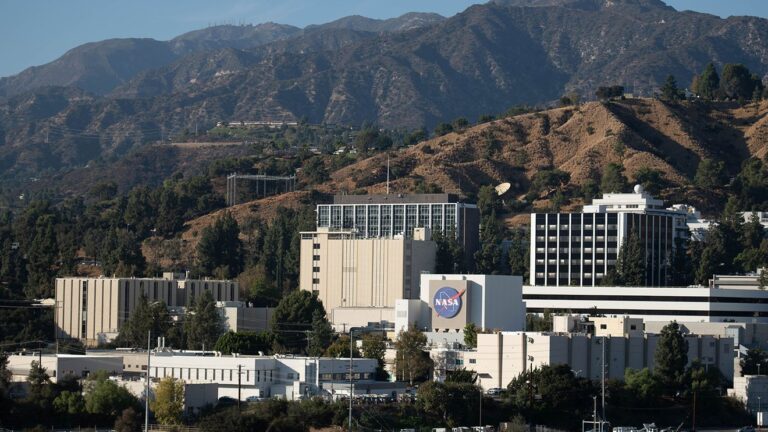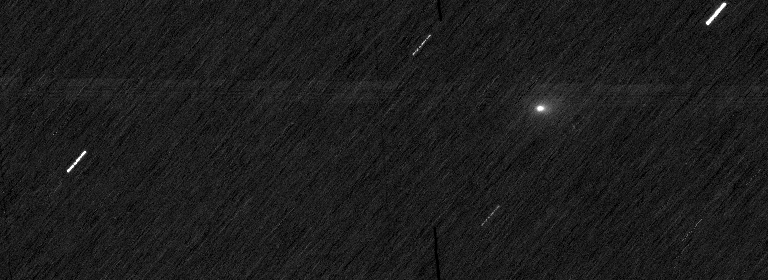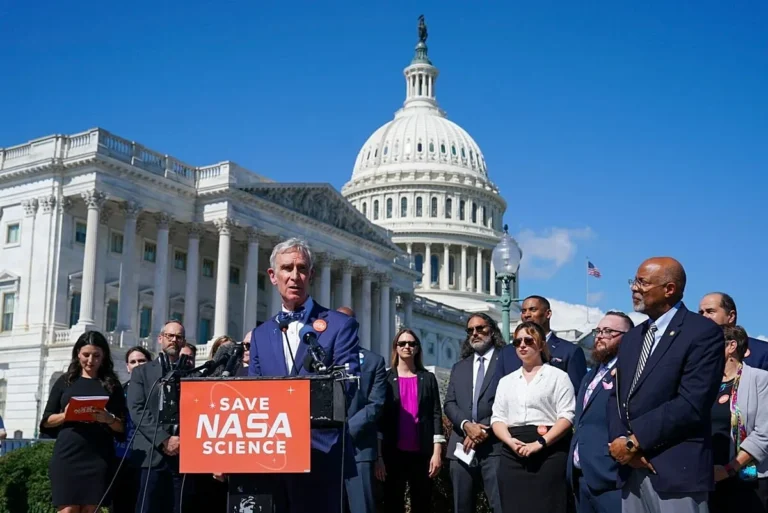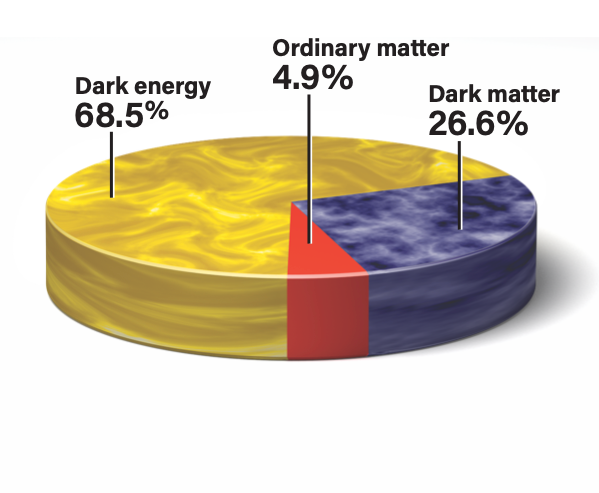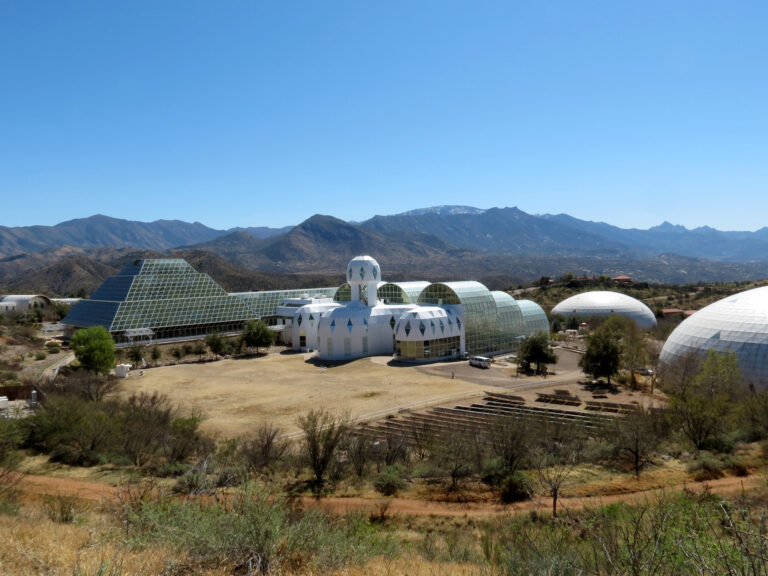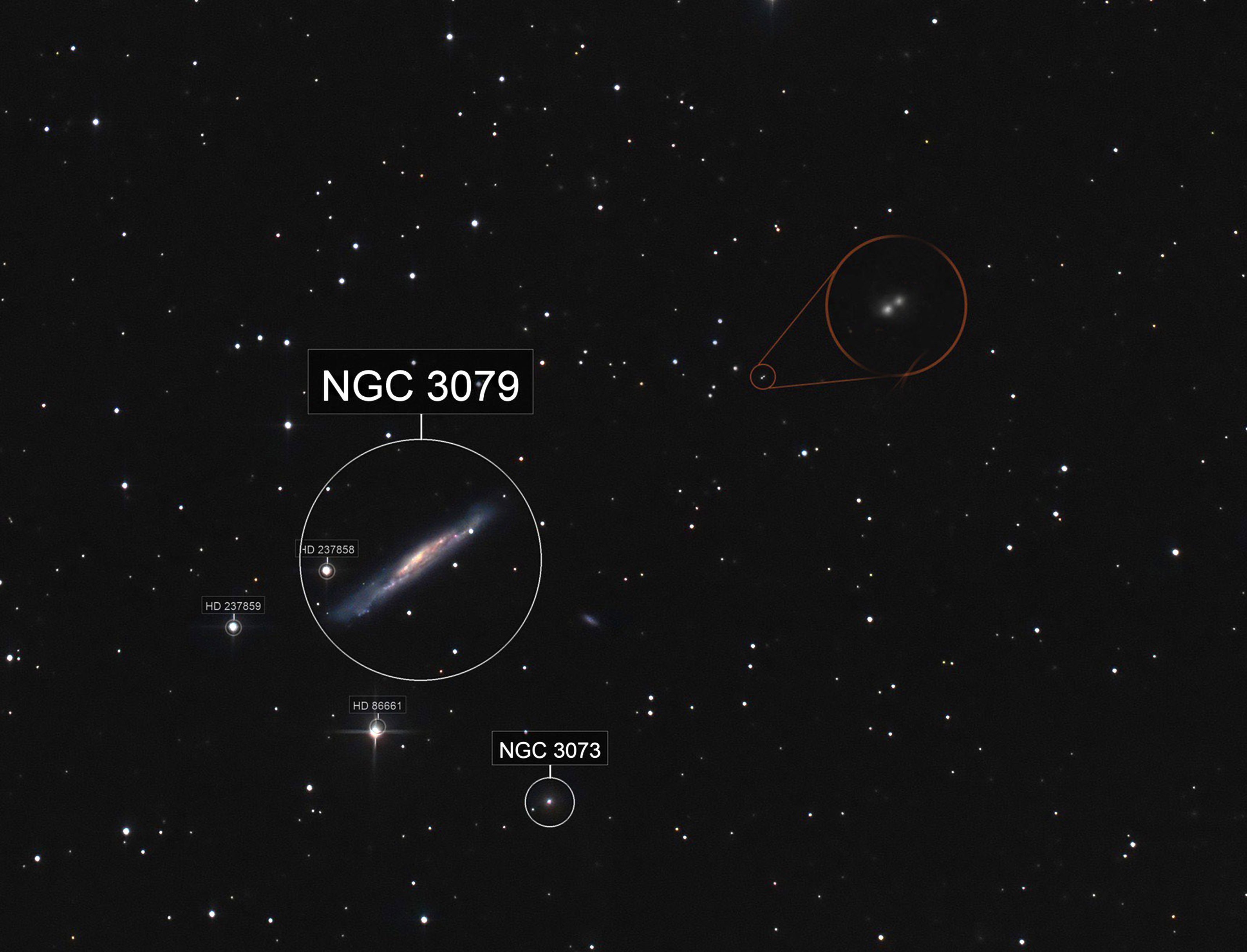
Key Takeaways:
- NGC 3079, a barred spiral galaxy in Ursa Major, was discovered in 1790 by William Herschel and is approximately 50 million light-years distant.
- Hubble Space Telescope observations of NGC 3079 reveal a large (over 3000 light-years wide) bipolar outflow of hot gas from its nucleus, possibly resulting from a period of intense star formation.
- The object Q0957+561, located near NGC 3079, is a gravitationally lensed quasar, appearing as a double image due to the warping of spacetime by an intervening galaxy (YGKOW G1).
- Q0957+561 provided the first observational confirmation of gravitational lensing, supporting Einstein's theory of general relativity.
In 1790, William Herschel discovered NGC 3079, a nearly edge-on barred spiral galaxy in Ursa Major about 50 million light-years away.
Hubble images reveal its spiral disk is peppered with many HII regions that appear strikingly red. Hubble also uncovered how the galactic nucleus is emitting a lumpy bubble of hot gas surrounded by glowing fingers of interstellar matter. The bubble is more than 3,000 light-years wide and towers 3,500 light-years above the galaxy’s spiral disk. Research suggests that the bubble is caused by a stream of high-speed particles that were released during a surge of star formation.
There’s another oddity nearby. Though not physically related, Q0957+561 lies just 14′ northwest of NGC 3079. This object contains not one, but two quasars separated by 6″. Do quasars form in pairs too, like some stars? That was undoubtedly one of the first questions asked when Q0957+561 (nicknamed the Twin Quasar) was discovered in 1979. Further studies revealed that it’s actually a single quasar; it only appears double due to gravitational lensing.
A galaxy cataloged as YGKOW G1 happens to sit exactly between us and the distant quasar. Its gravity warps the space around it, bending the path of light that passes nearby, like a lens. In fact, Q0957+561 was the first known example of a gravitational lens, proving that Einstein got it right when he said that gravity can bend the fabric of space and time.

